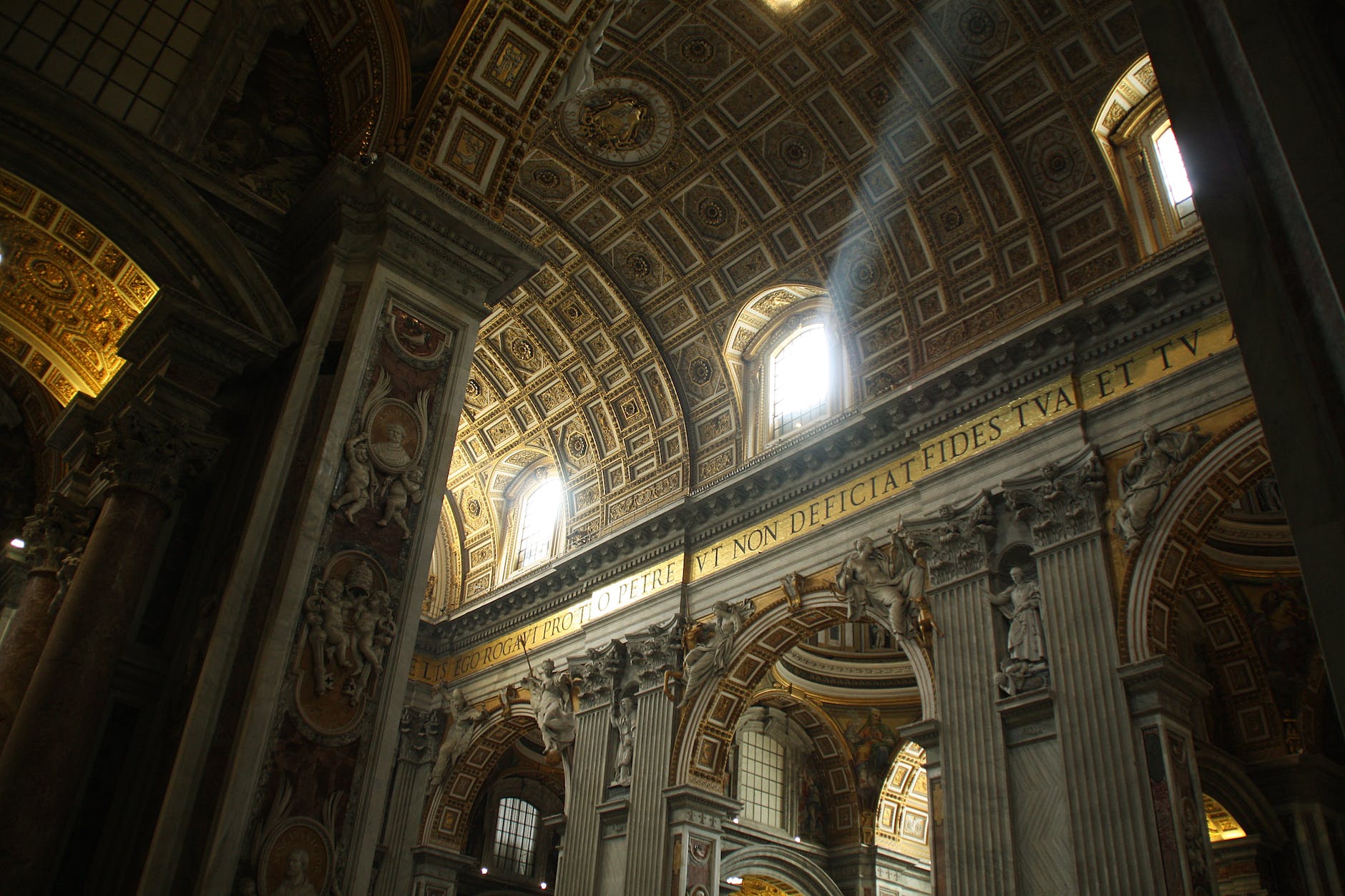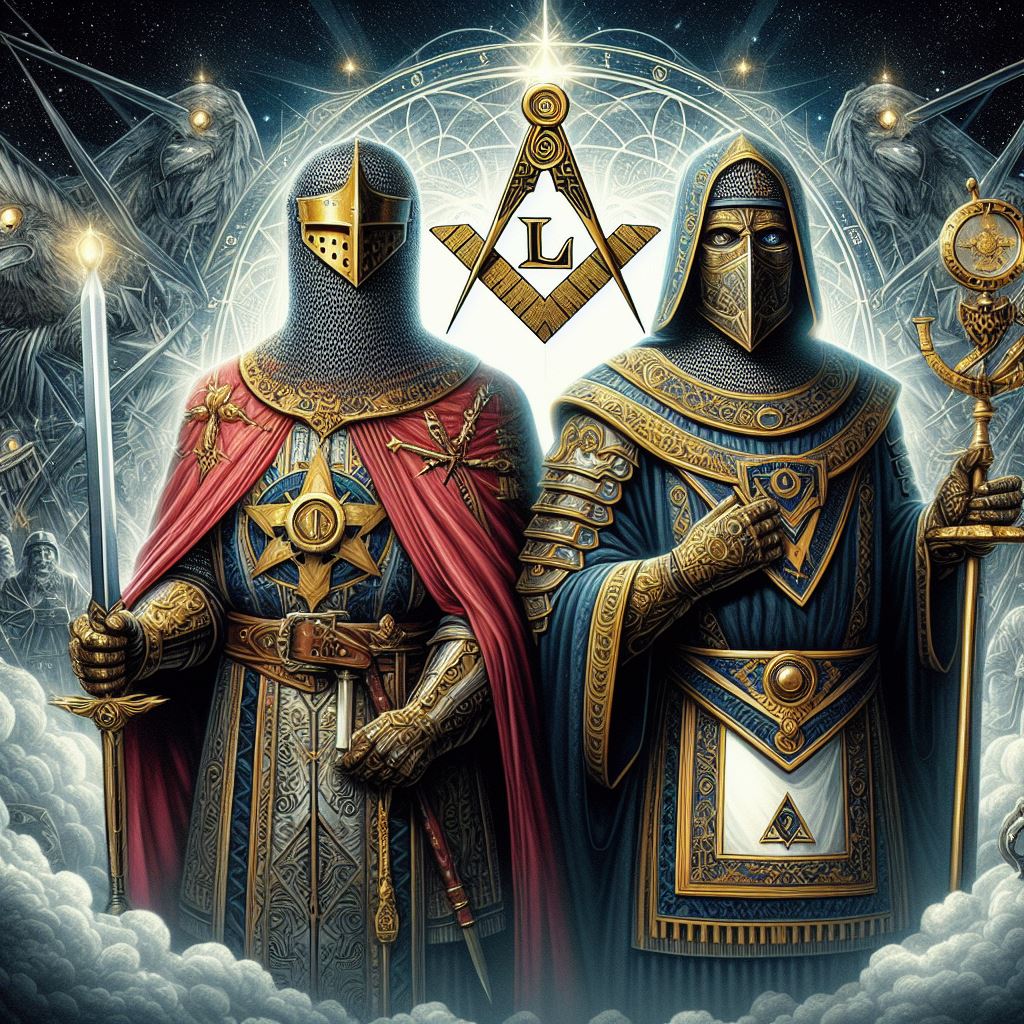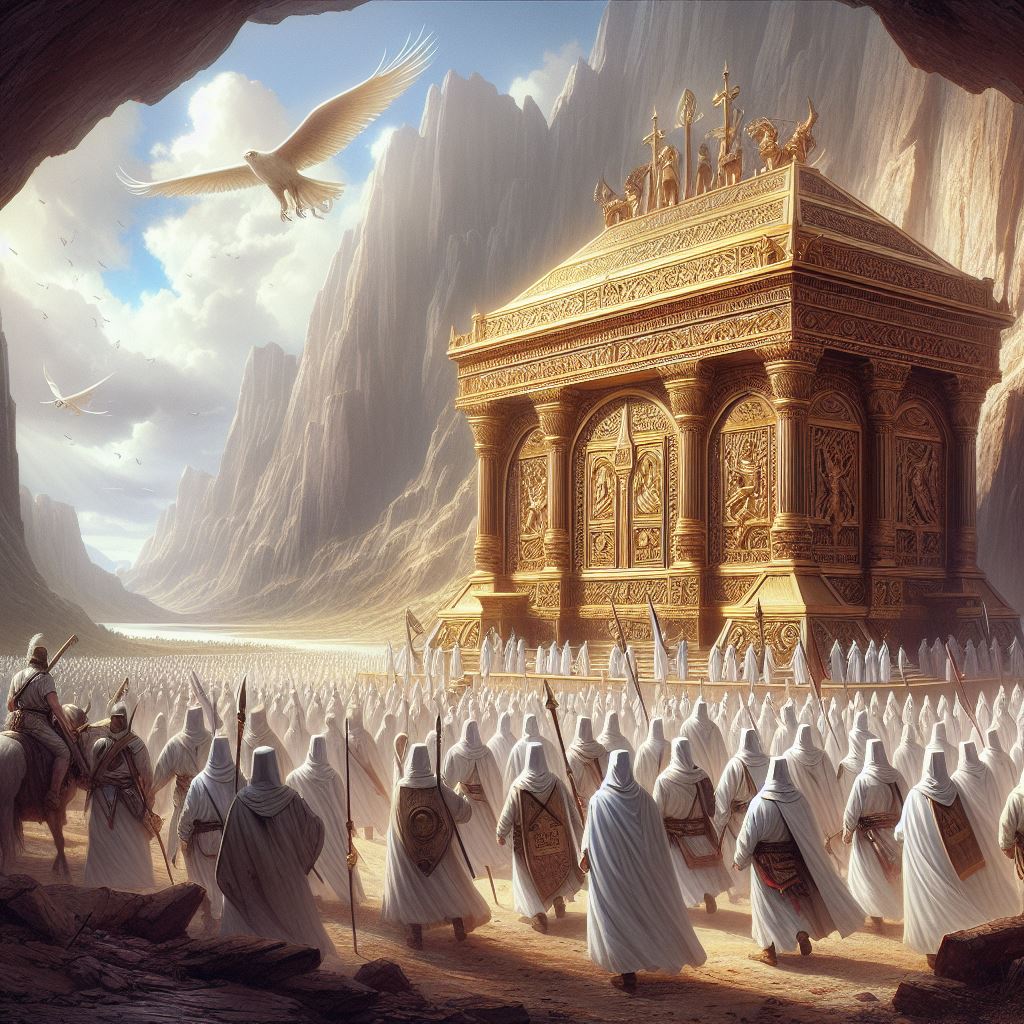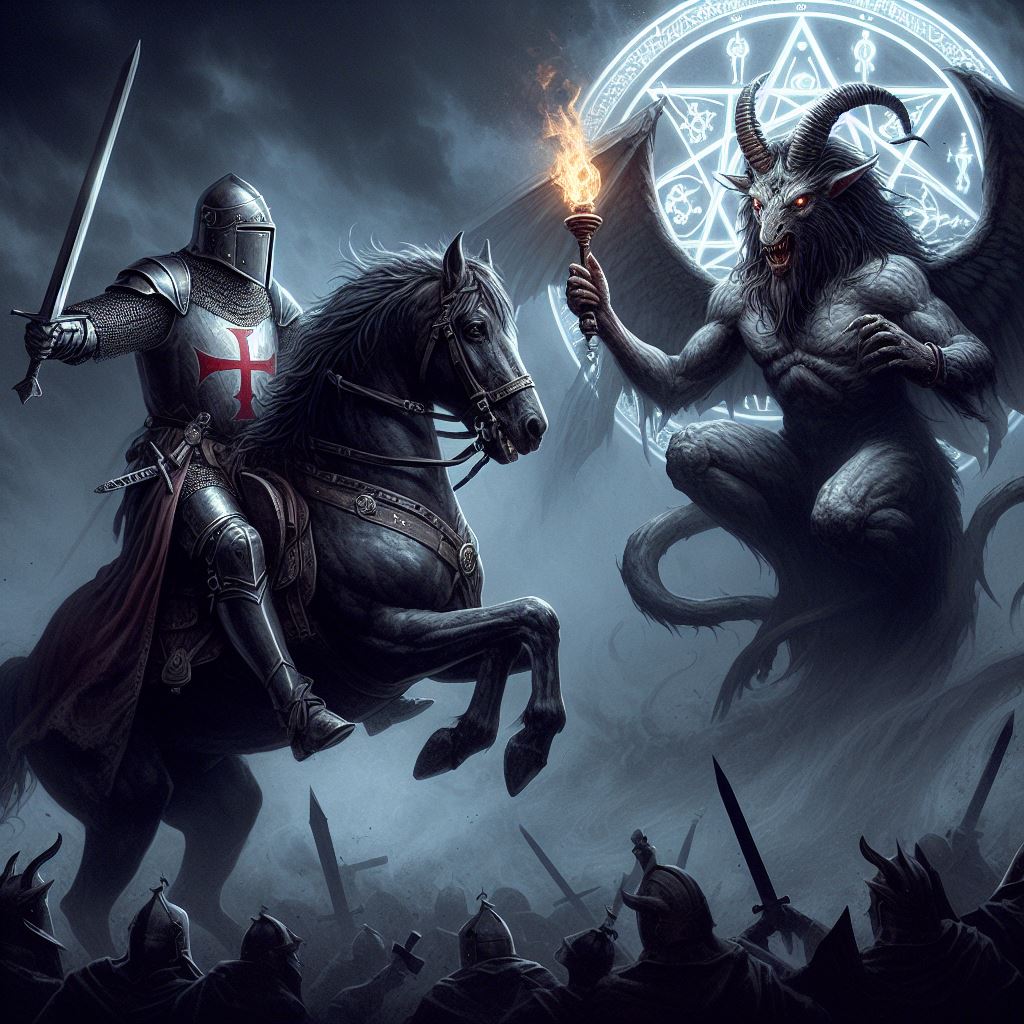
Is there a Muslim inscription on the back of the Throne of St Peter in the Vatican? This incendiary claim was found by my good self in a nineteenth century book in my library of ancient tomes. Now – it may just be Victorian anti-Catholic propaganda. But there’s some evidence that it could be true.
The Muslim declaration of faith on the Throne of Saint Peter
In an early nineteenth century book in my library I came across a fascinating story that I’d like some historical sleuths out there to confirm or deny. The claim in the book is that on the Throne of St Peter in the Vatican – held aloft by the four Doctors of the Church – is inscribed the declaration of faith made by all Muslims (the Shahadah): “There is no God but Allah and Muhammad is his Prophet (or Messenger)”
I came across this because the book is a calendar of holy events during the year and the 18th January, just gone, is The Feast of St Peter’s Chair. The book describes the throne at the end of the nave in St Peter’s basilica – the centre of the Roman Catholic church:
A glory of seraphim, with groups of angels, sheds a brilliant light upon its splendours. This throne enshrines the real, plain, worm-eaten, wooden chair on which St Peter, the prince of the apostles, is said to have pontificated
Holy Roman Emperor gifts the Throne of St Peter to the Pope – with Muslim inscription!
The chair has not been seen in modern times. It is indeed a worm-eaten relic donated to pope John VIII in the 9th century by the Holy Roman Emperor Charles the Bald. He gave the pope this present in return for being crowned Holy Roman Emperor by the pontiff, thereby making him the divinely anointed ruler of central Europe. This papal ceremony had been initiated by his grandfather Charlemagne.
Pope John VIII was in terrible trouble. The Muslim Saracens had overrun Sicily and southern Italy and were menacing Rome. He needed the help of the emperor. In the end, Charles couldn’t give the papacy the support it badly needed and the pope turned to the Byzantine empire for assistance. This angered some in Rome and he became the first pope to be assassinated.
Napoleon’s troops discover the Muslim declaration on the Throne of St Peter!
Fast forward to the French Revolution and the wars of Napoleon in the early nineteenth century. The French leader took Italy and, as in other places, Napoleon’s soldiers looted religious sites. They were imbued with the anti-clerical ideas of the revolution and not cowed by the holiness of the Vatican. Once they got into the basilica, they had the throne of St Peter in their sights. By now, the ancient relic was encased in seventeenth century statuary – a magnificent ebony and gold construction.
The sacrilegious curiosity of the French broke through all obstacles to their seeing the chair of St Peter. They actually removed its superb casket and discovered the relic. Upon its mouldering and dusty surface were traced carvings, which bore the appearance of letters. The chair was quickly brought into a better light, the dust and cobwebs removed, and the inscription faithfully copied. The writing is in Arabic characters and is the well-known confession of Mahometan faith – “There is but one GOD and MAHOMET is his prophet!”
The book speculates that the chair might have been crusader spoil from the east – though that would be contradicted by the account of it being an earlier donation in the ninth century, 200 years before the First Crusade. The statement inscribed on the chair is known as the “Shahadah” – which only has to be recited three times in order for somebody to become a Muslim. In our time, it’s also the Arabic statement on the flags of Daesh or the so-called Islamic State.
Throne of St Peter in Venice includes a Muslim gravestone!
Coincidentally, there is another throne of St Peter held in the church of San Pietro di Castello in Venice – once the seat of the Venetian patriarchs. This church is rarely visited by tourists, though it should be. The throne is clearly modelled from an Islamic gravestone.

Historians believe its journey began in the Muslim Fatimid empire. When that collapsed, it was most likely looted by Byzantine troops. Then during the Fourth Crusade in 1204, it would have ended up in Venetian hands after their soldiers ransacked Constantinople.
Vatican hush up?
Back to the throne in Rome – it was exposed again to public view in 1867. This was for the eighteenth centenary of the martyrdom of Saints Peter and Paul. Photos were taken by the Alessandri brothers at the time. The throne is one foot ten inches high and just under three feet wide. With metal rings on the side, it was clearly intended to be carried with poles – presumably with the pope seated in it. Bits had been hacked off for relics to be given away. The “arabesque” motifs were noted by spectators.
And as my book notes:
This story has been since hushed up, the chair replaced, and none but the unhallowed remember the fact, and none but the audacious repeat it. Yet such there are, even at Rome!












2 thoughts on “Muslim inscription on the Throne of Saint Peter?”